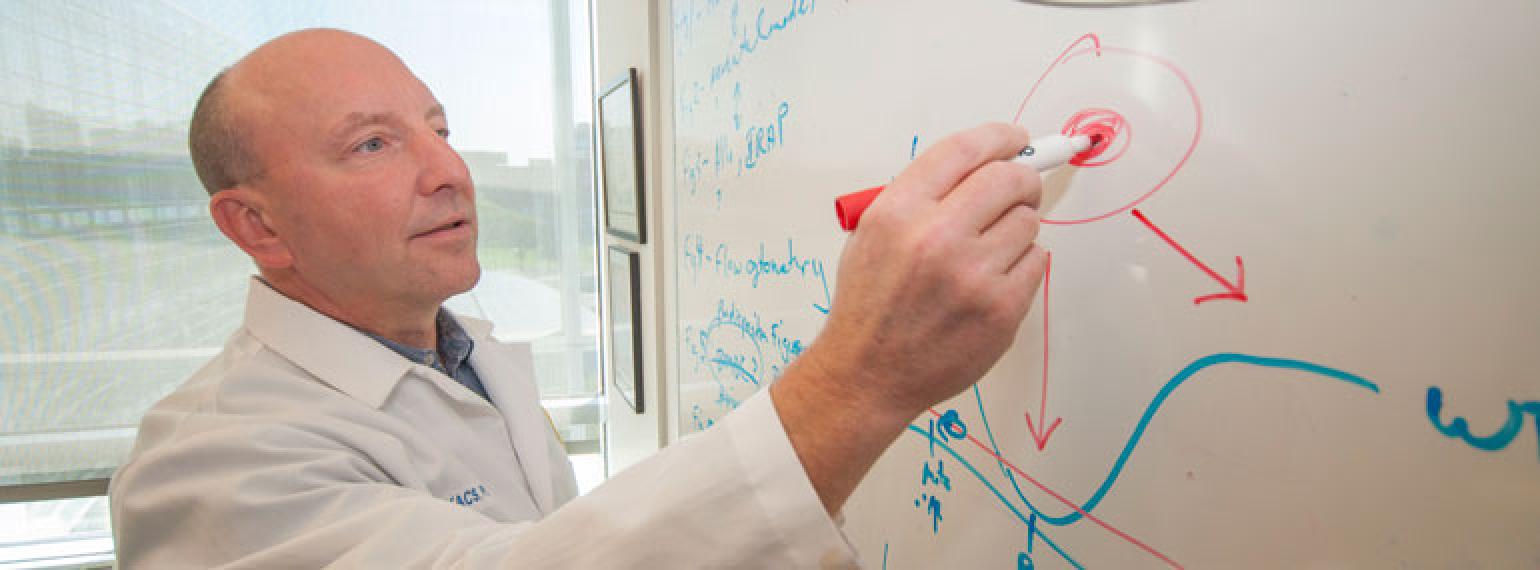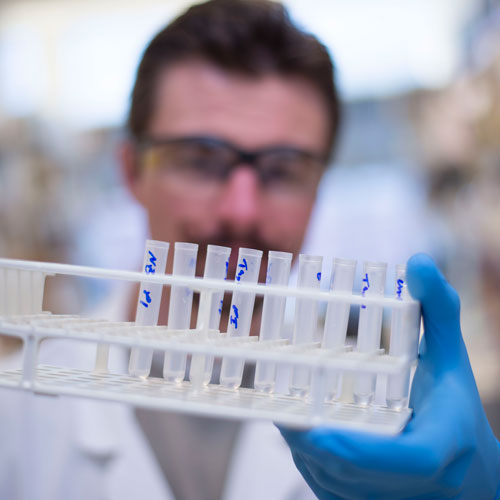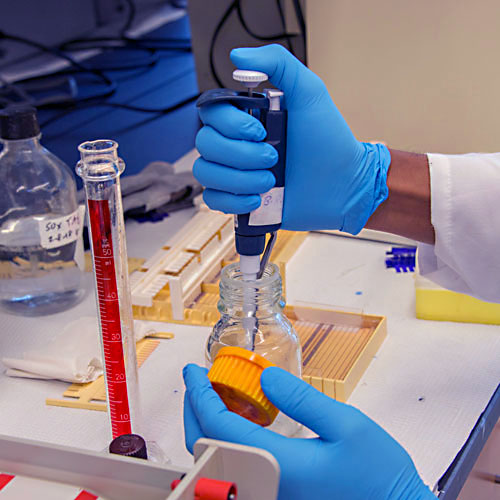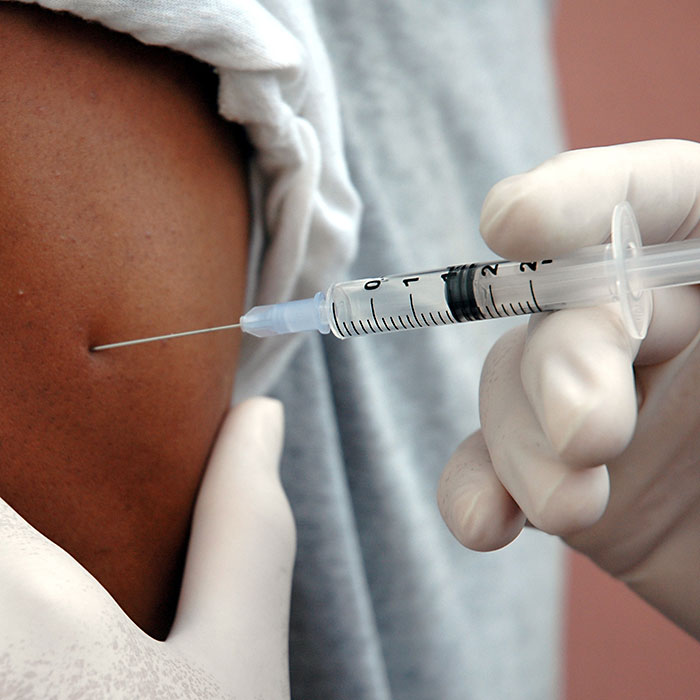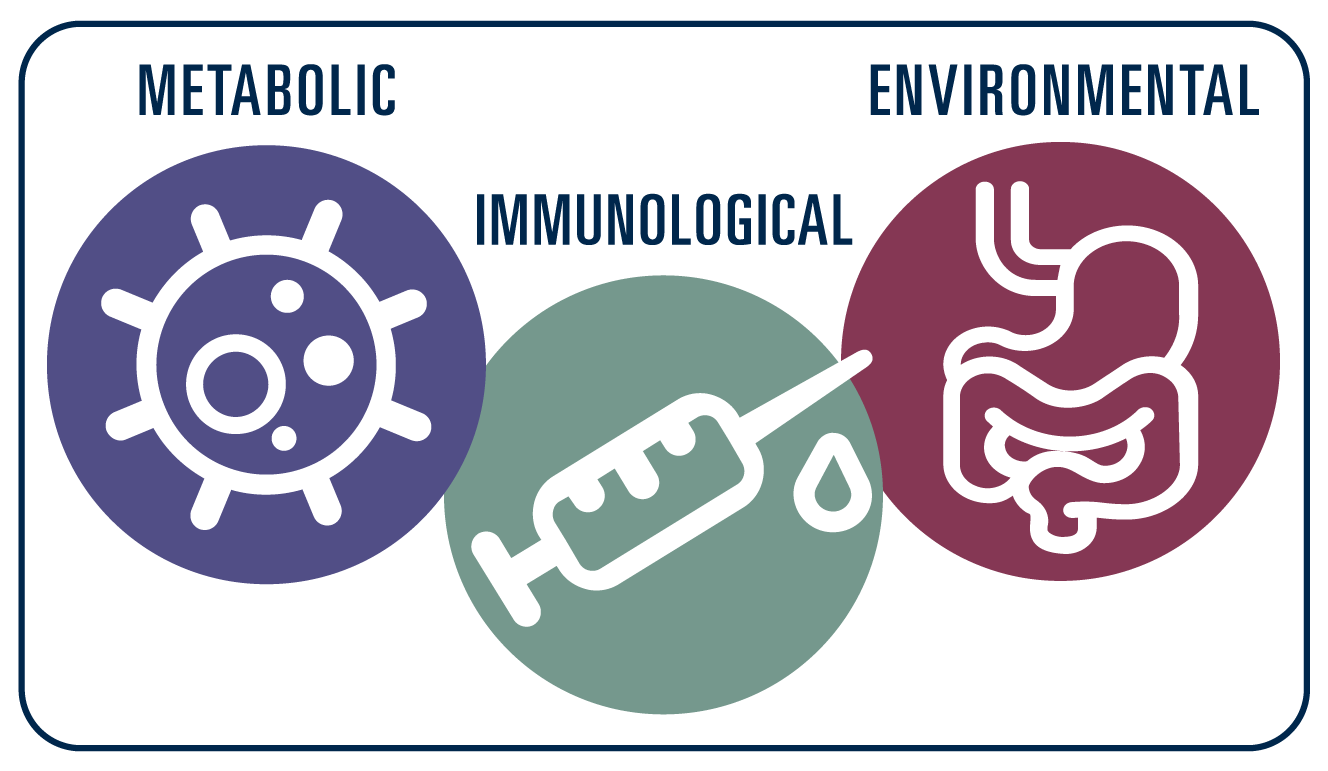From a scientific perspective, our multidisciplinary approach centers on 3 areas of investigation: metabolic factors, environmental factors, and immunological factors. Learn more about our investigators:
Metabolic
Chang Kim, Ph.D., studies the immune regulatory functions of several key nutritional factors, like Vitamin A, and is exploring immune cell therapy options to treat food allergy, similar to immune cell therapy for cancer. Learn more about Kim’s work.
Environmental
Catherine Ptaschinski, Ph.D., is examining links between an expectant mother’s microbiome during pregnancy and the likelihood that her child will be food-allergic. She’s also looking at connections between eosinophilic esophagitis (EoE) and food allergy. Learn more about Ptaschinski’s work.
Gary Huffnagle, Ph.D., is studying the microbiome of the intestinal system to develop a better understanding of what goes wrong when the immune system reacts to allergens. Learn more about Huffnagle’s work.
Nick Lukacs, Ph.D., has forged national and global partnerships to study how the immune system develops in babies even before they’re born, and how the human microbiome affects the development of food allergy. Learn more about Lukacs’ work.
Immunological
James R. Baker, Jr., M.D., and Jessica O’Konek, Ph.D., are making significant progress toward a vaccine that could provide long-term protection against food allergy. Learn more about Baker’s work and O’Konek’s work.
Simon Hogan, Ph.D., is seeking to understand the immunological processes that contribute to the severity of food-induced anaphylaxis and how to switch off these signals. Learn more about Hogan’s work.
Georgiana Sanders, M.D., M.S., is leading clinical trials in food allergy immunotherapy looking at oral immunotherapy, peanut patch therapy and sublingual therapy. Learn more about Sanders’ work.

